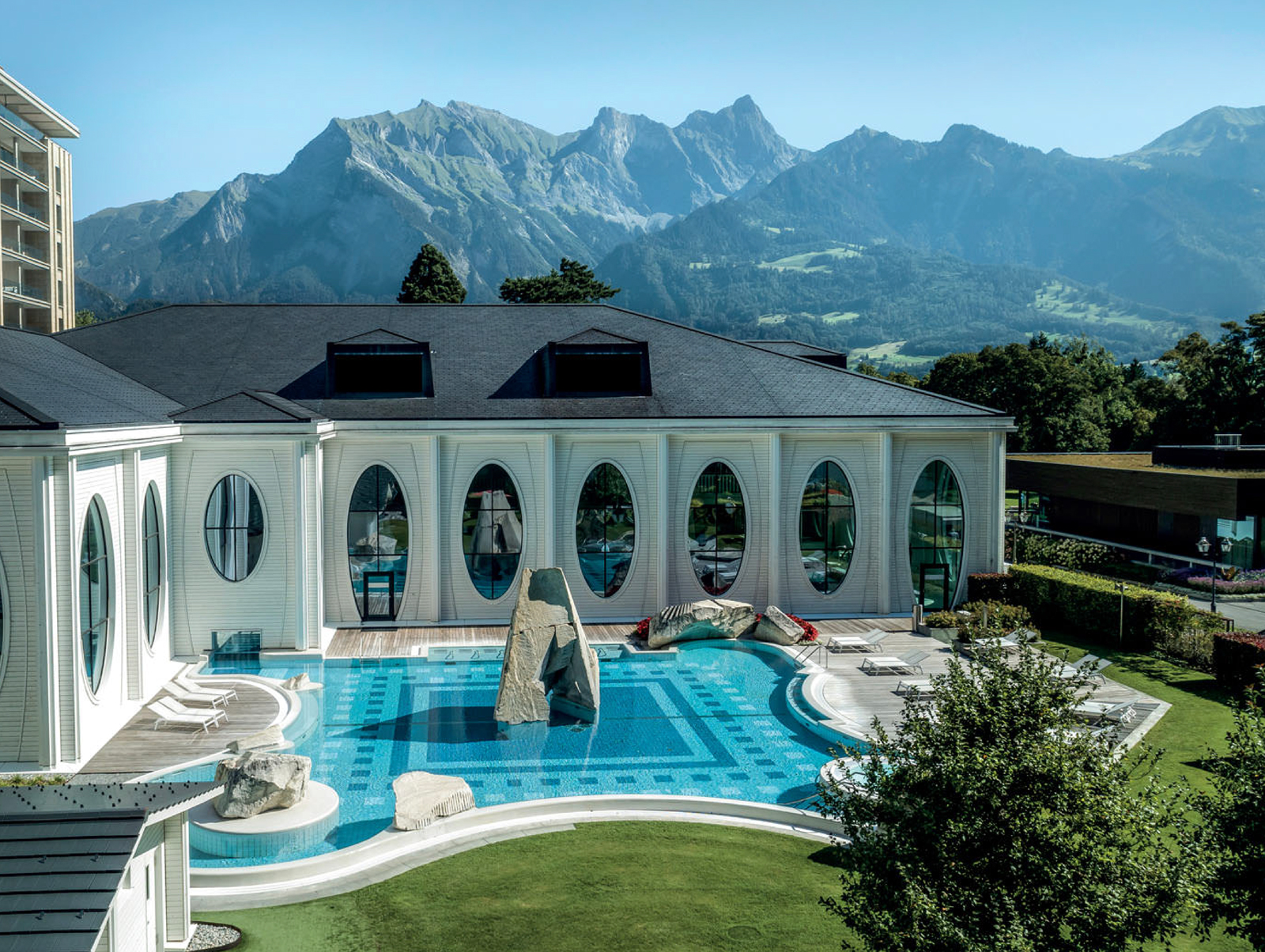Long construed as unchanging as the rock of the Alps, Switzerland seems different these days. A crack in the country’s social redoubt began with a plague of new-millennium graffiti, whose remnants chart the only real upheaval the country has ever known—an outburst of youthful rebellion that, in lieu of the strikes and riots of other European nations, found odd acceptance here. And the barrier-breaking of this generation seems to have also served a more lasting purpose: in adulthood, this we-won’t-be-bound creativity has morphed to a more outward, globalization-driven pride for a range of novel Swiss products, services, and traditions.
With its headline troika of cheese, chocolate, and chronometers embattled by changing economics (earlier this year, a U.S. court ruled Gruyère can no longer be a Swiss trademark, Toblerone lost its Matterhorn logo when production moved to Slovakia, and the proliferation of digital timekeeping has made watches more decorative than practical), there’s been room to raise banners on the country’s flourishing wellness industry, increasingly eclectic gastronomy, and unheralded vineyards. Updated, modernized, and promoted with consummate Swiss savvy, these are meticulously fondued with history, culture, and the usual dose of alpine nostalgia. One place to experience this melting pot of culture is Grand Resort Bad Ragaz in the Rhine Valley near the Liechtenstein border.
In German, bad means bath, and the traditions surrounding these particular waters go back centuries.
In 1242, bird-hunting monks from the Benedictine abbey at Pfäfers were drawn to a mist rising from a gorge along the Tamina River, long attributed to the breath of a dragon by locals. The curious monks descended into the chasm to discover hot springs pouring from rocks adjacent to the river. In a land of ice-cold, glacier-fed cataracts, this must have seemed a gift from God—and one that paid dividends.
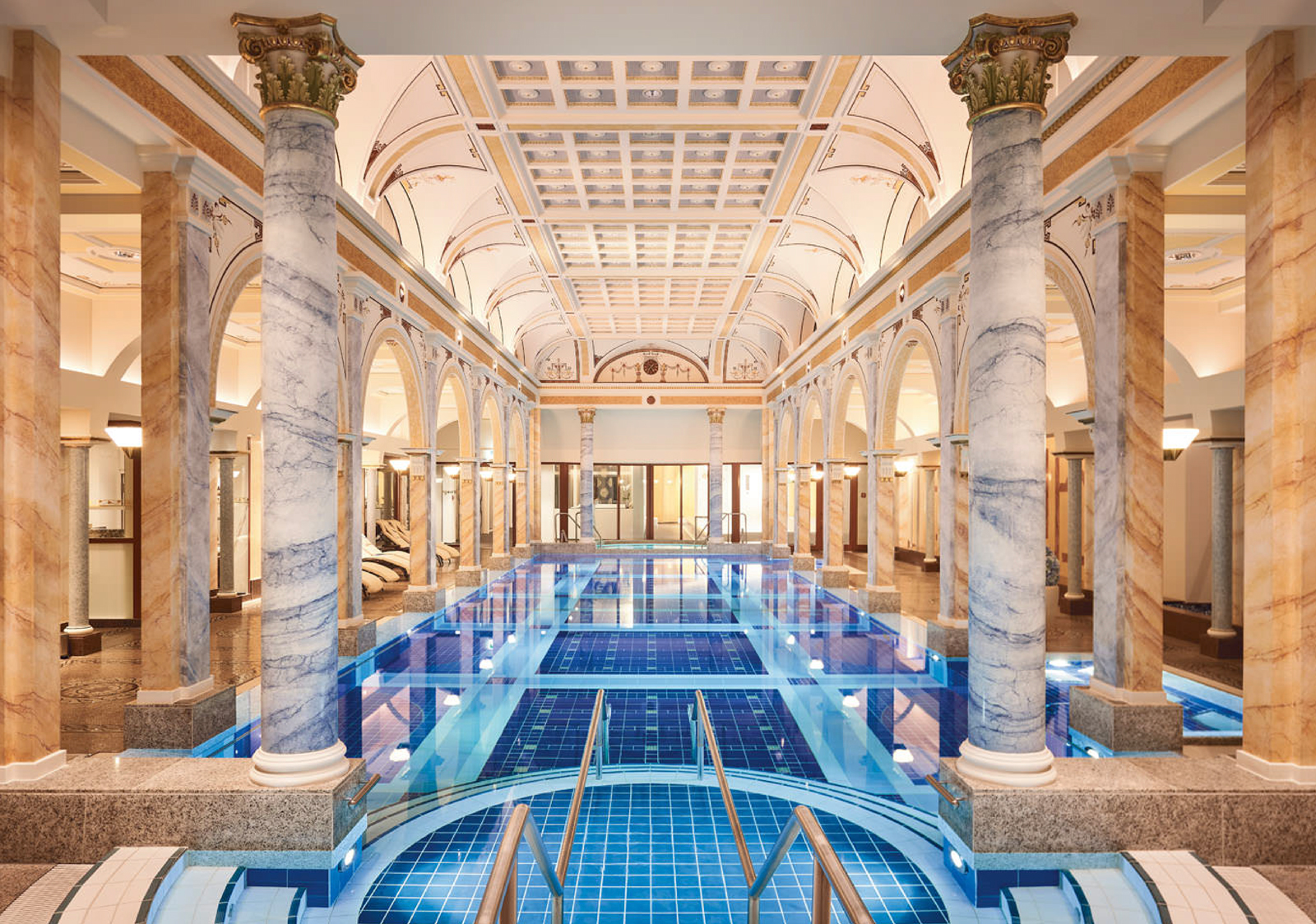
The magnificent Helenabad thermal baths were built in the 19th century.
Not only were the warm, lightly mineralized waters relaxing and restorative to soak in, but the afflicted were happy to pay local entrepreneurs, who leased the springs from the abbey, for a potential cure. Access was difficult: those who could shimmied down ladders into the gorge, while others, blindfolded to prevent panic, were lowered in baskets by rope. For years, bathing took place in rock depressions, so the appearance in 1350 of wooden bath huts was a celebrated improvement. Two centuries later, a noted physician’s medical treatise on the healing powers of these thermal waters provided an impetus to build a bathhouse above the gorge—Altes Bad Pfäfers—through which the flow was routed. Eventually, local government took over the Tamina springs, improving access with a road. Nowadays, a rock tunnel leads to grottos where 8,000 litres per minute gush at a consistent 36.5 Celsius—body temperature. While the source is captivating, since 1840, when a wooden pipe began carrying the water 4.3 kilometres to a governor’s mansion turned grand hotel in the village of Ragaz, the “blue gold” has been enjoyed in a great deal more comfort.
In 1869, a second grand hotel, the Quellenhof, joined Hotel Hof Ragaz, along with a garden, parkland, kursaal, and Europe’s first public thermal baths since the Romans. The add-ons were built courtesy of renowned Swiss architect Bernhard Simon, who’d purchased the grounds and water rights from the canton in 1868. His timing couldn’t have been better to capture the fancy of Europe’s glamorous belle époque. With two hotels of duelling architectural splendour, the column-lined Helenabad pool with its arches and vaulted ceiling, topiary-constellated grounds, excellent gastronomy, impeccable service, and mountain surroundings, Bad Ragaz was a place for poets, painters, politicians, and princesses. One writer who frequented the Quellenhof during this era penned an ode to the simple life she observed while wandering the local alps that proved a gift not only to the country but to the world. Bad Ragaz was where Swiss author Johanna Spyri found inspiration for her 1880-’81 two-volume classic Heidi.
The baths and the book are related, but we’ll come back to that.
There’s plenty to be happy about at Bad Ragaz, where the ancient bathing and spa tradition has evolved to combine holistic medical expertise and everything a luxury resort has to offer.
The other trend Simon fortuitously coattailed was the dawning of Switzerland’s health and wellness industry. During the late 1800s, a campaign was launched to attract tuberculosis patients to the country in the belief that clean air, exercise, and good nutrition could help vanquish a disease then killing a quarter of Europeans. Today, some 36,000 health tourists travel to Switzerland annually for treatments of other ailments. Nevertheless, most wellness-sector revenue still derives from Swiss citizens, for whom alternative therapies are so important that in 2009, two-thirds voted to have them covered by health insurance. While doctors in Canada can prescribe national parks passes to get patients into nature, Swiss doctors have no need, so ingrained is outdoor living as a staple of health in the national psyche. Which is one reason the supposedly restrained Swiss are perennially listed as one of the world’s happiest peoples.
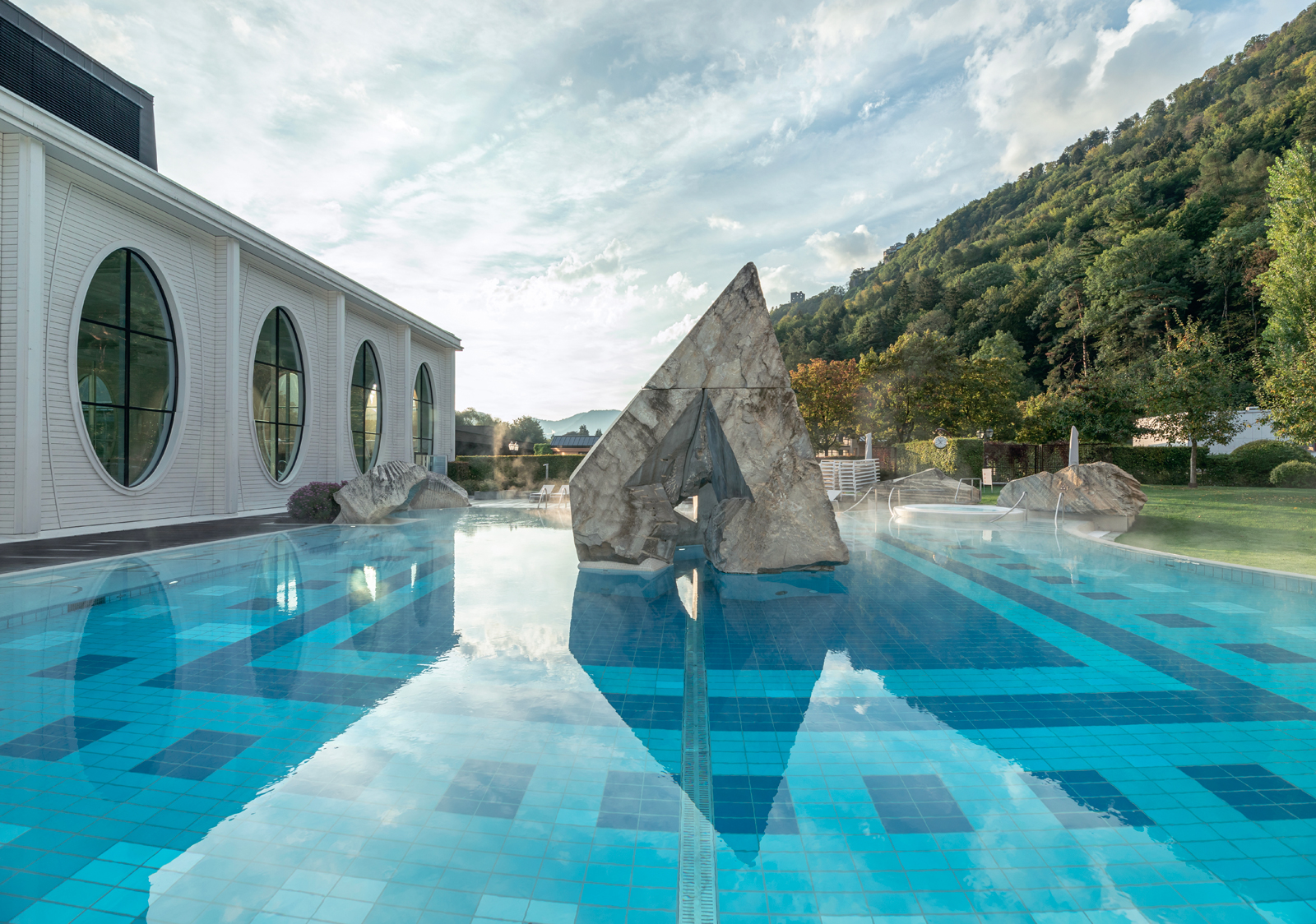
There’s plenty to be happy about at Bad Ragaz, where the ancient bathing and spa tradition has evolved to combine holistic medical expertise and everything a luxury resort has to offer—including two golf courses, a casino, gyms, a Swiss Olympic Medical Center, a labyrinth of thermal baths and pools, countless spa experiences and treatments, a “sauna world” given over to international variations, and seven restaurants with six Michelin stars and 75 Gault&Millau points among them. This level of recognition sets Bad Ragaz apart from other spas. As does its great wine—courtesy of the neighbours.
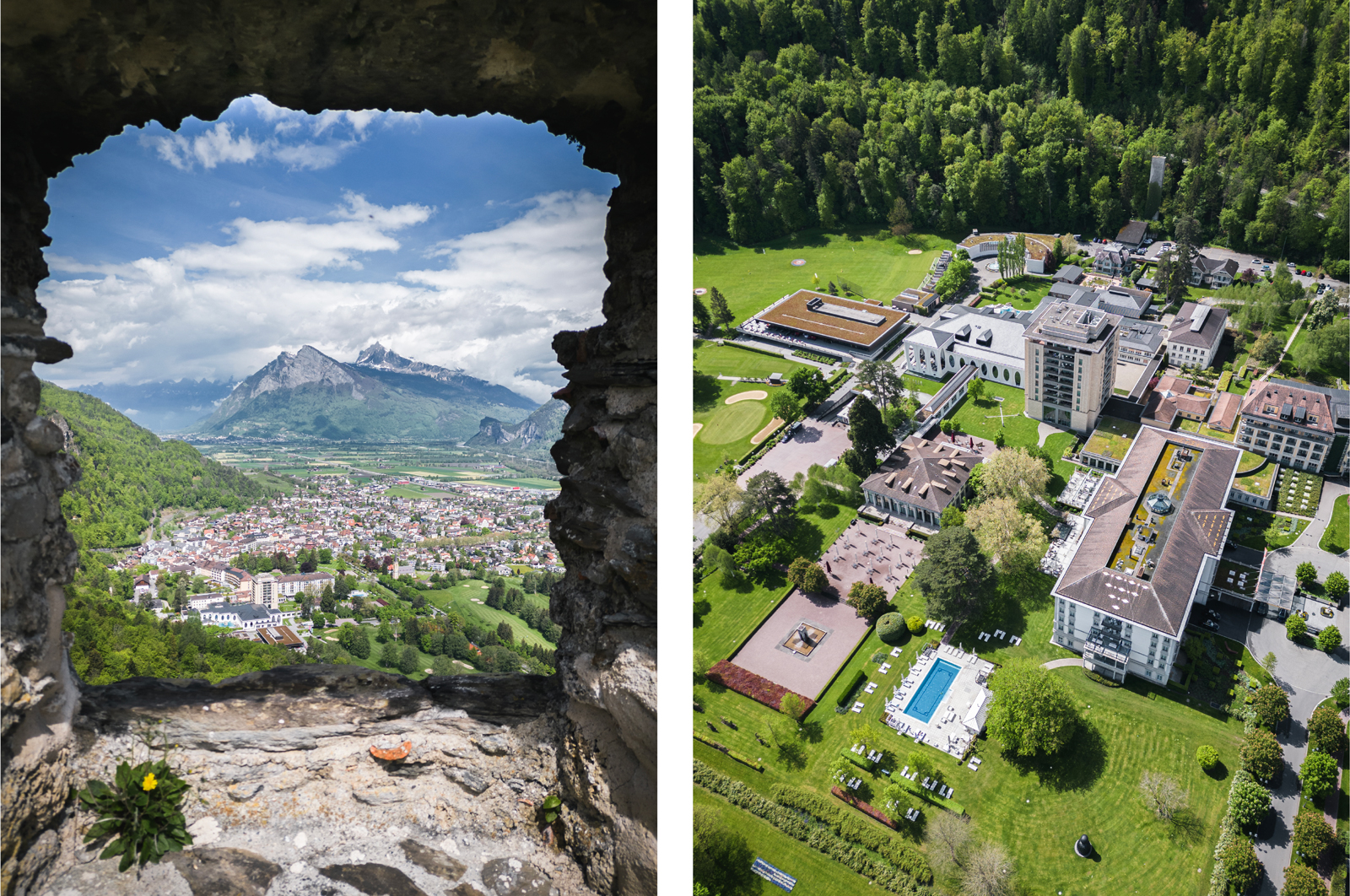
Whether you are at dinner or relaxing on your balcony, the nose of any number of local vintages may draw your attention to their cross-valley cradle—the Bündner Herrschaft, a wide bench above the Rhine known as Switzerland’s Burgundy. A walk through its villages of Malans, Jenins, Maienfeld, and Fläsch nets not only charming vineyard vibes but also historic fortresses, castles, and churches. To gain some cork orientation beforehand, you can meet with a sommelier in the Quellenhof’s glass, climate-controlled “wine round” for a lesson on Swiss wine that will open both your palate and your eyes.
Generally good and in many cases spectacular, Swiss wine remains a mystery to most for one reason: for every 100 bottles produced, fewer than two escape the country. Hosting more than 250 grape varieties, some endemic to the country’s vertiginous vineyards, the Swiss imbibe almost every drop because export economics for the country’s small-estate quantities don’t add up. Although pinot noir and chardonnay grapes dominate here, no fewer than 45 varieties are spread among 70 wineries across the Bündner Herrschaft (which, for comparison, is about a tenth the size of the Okanagan’s Naramata Bench).
Leaving the grounds on the walk to Maienfeld, if you do a double take at giant sequoia trees and ponds afloat with phantasmagorical mandarin ducks, know that such curiosities align with the resort’s tradition of open-air sculpture and living art, which culminates in its annual Bad Ragartz event. Crossing the Rhine, you’ll follow neat public paths through vineyards as old as 800 years, their gnarled wood suggesting as many tales as the old-town wall embracing Maienfeld’s neat medieval streets. And here’s where the aforementioned tale reenters your consciousness.
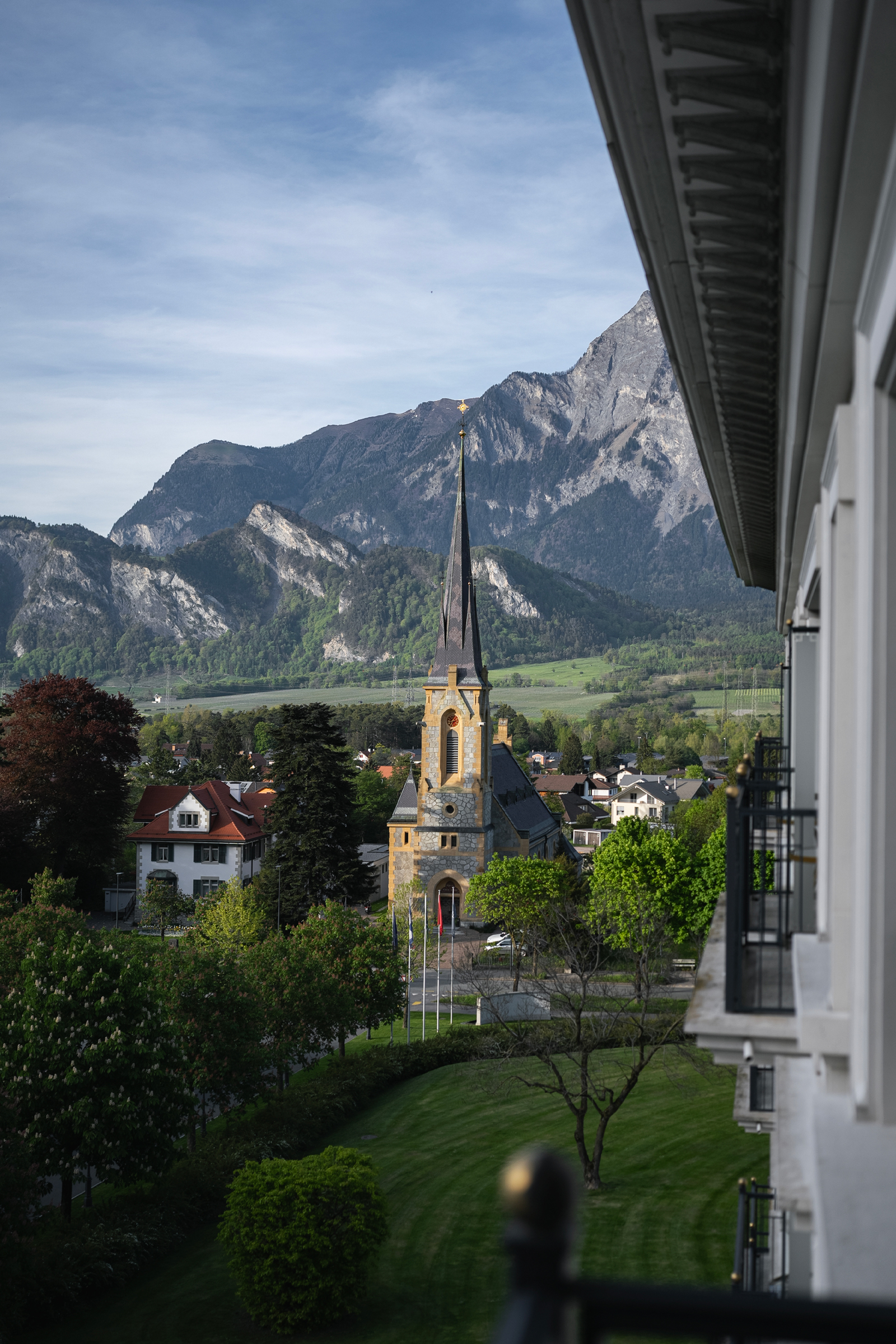
An inconspicuous sign welcomes you to Heidiland, an official Swiss holiday region between Lake Walen and Sarganser Land. One might not attribute the same terroir to the fermentation of both Heidi and pinot noir, but with signs pointing the way to Heidialp and Heididorf—re-creations of Heidi’s village, house, and classroom—you’re clearly at ground zero. Setting her story of a young orphan girl sent to live with her gruff goat-herding grandfather in an alp above Maienfeld, Johanna Spyri created the romantic, nature-oriented image of Switzerland the country still trades on. Translated into more than 50 languages, this global classic draws 150,000 aficionados, including busloads of Heidi-mad Japanese tourists, to the town each year. Heidi’s success in that country is attributable in part to the postwar appeal of an idealized alpine world but also to the 1974 Japanese animated series Heidi, Girl of the Alps.

And here’s where the circle of thermal waters, wellness, Bad Ragaz, and Heidi closes: the moral of Spyri’s story is that the purity and innocence of both childhood and nature are healing. As a heroine, Heidi has an inherent goodness that generates a warmth in which everyone she meets—and many of those who read about her—eventually bathe. An understanding that health and well-being are tectonic forces that can shift the ground beneath us.
Photos courtesy of Grand Resort Bad Ragaz. Read more from our Autumn 2023 issue.

